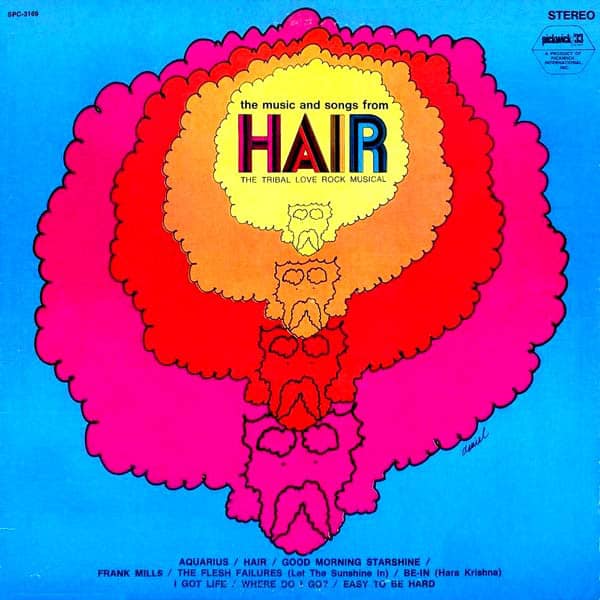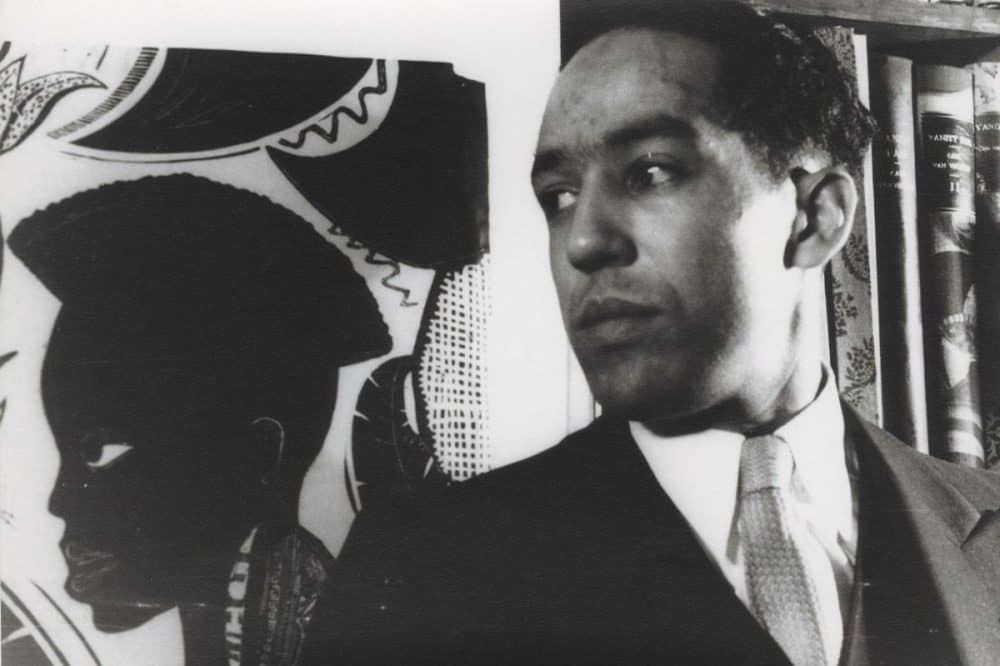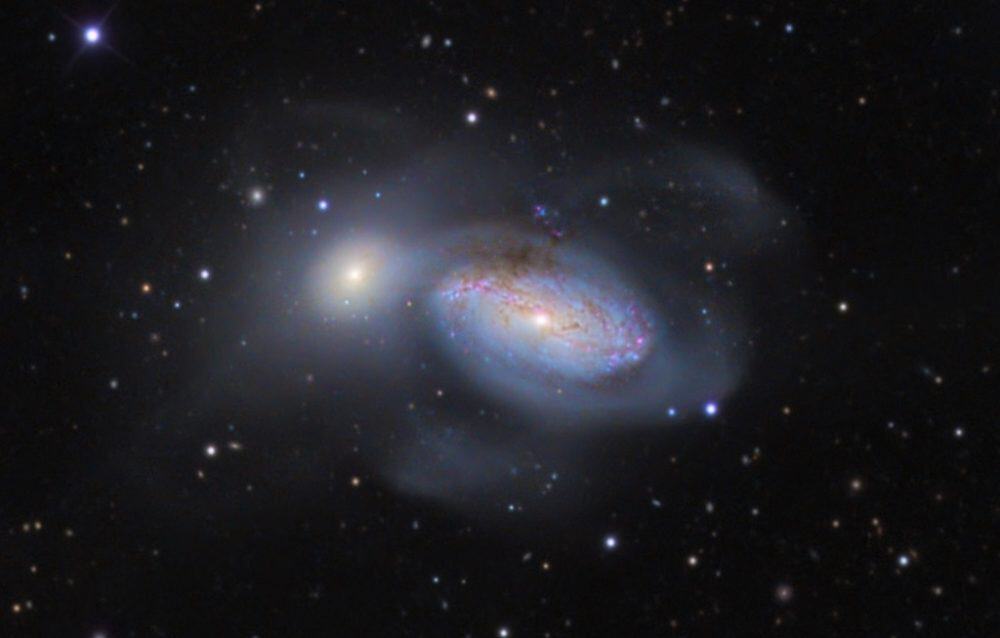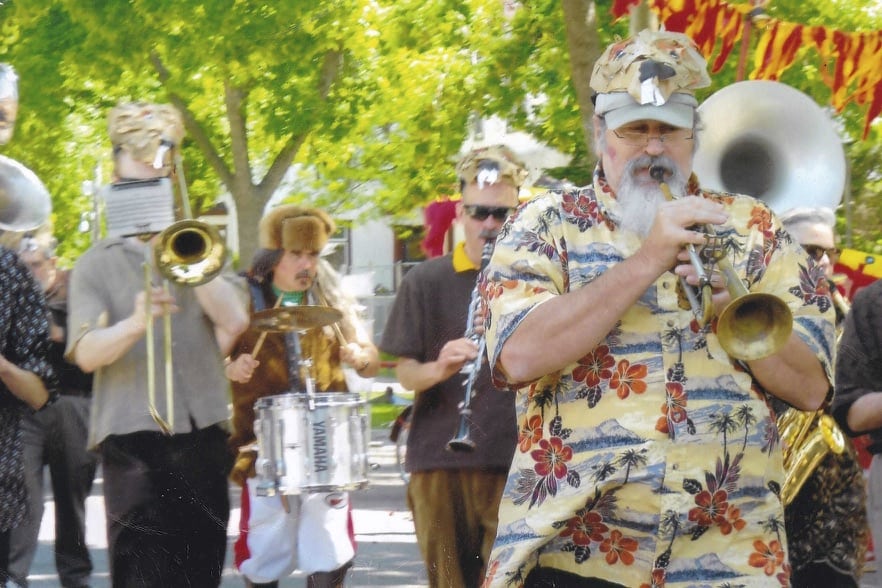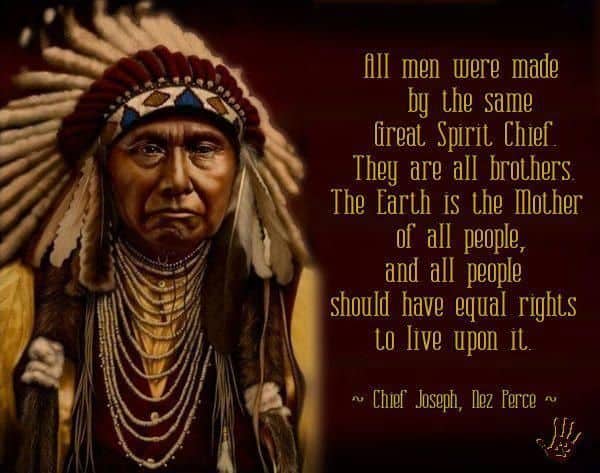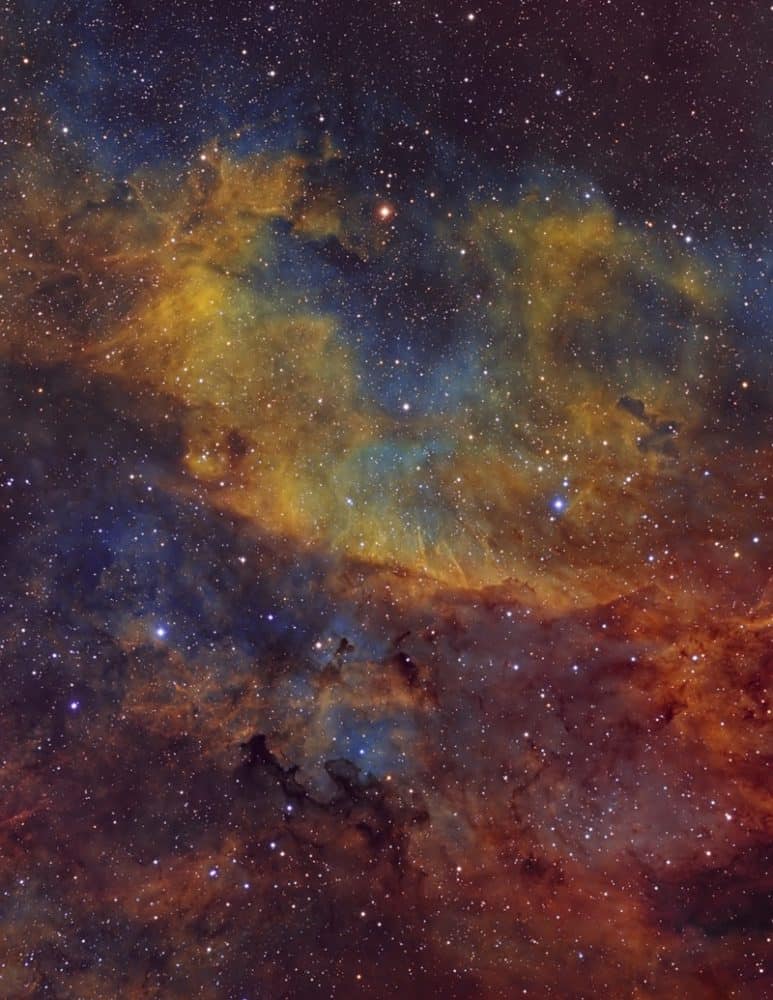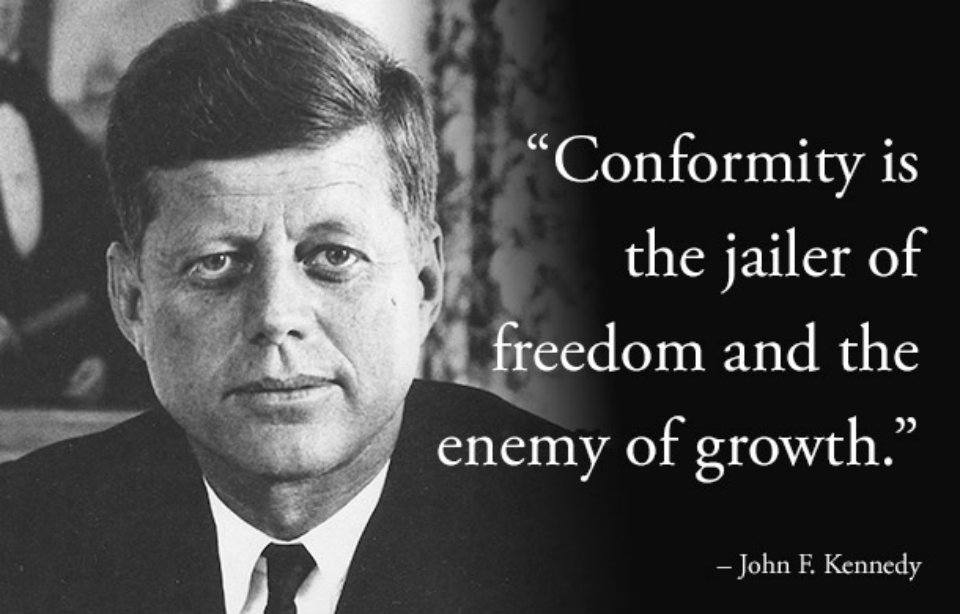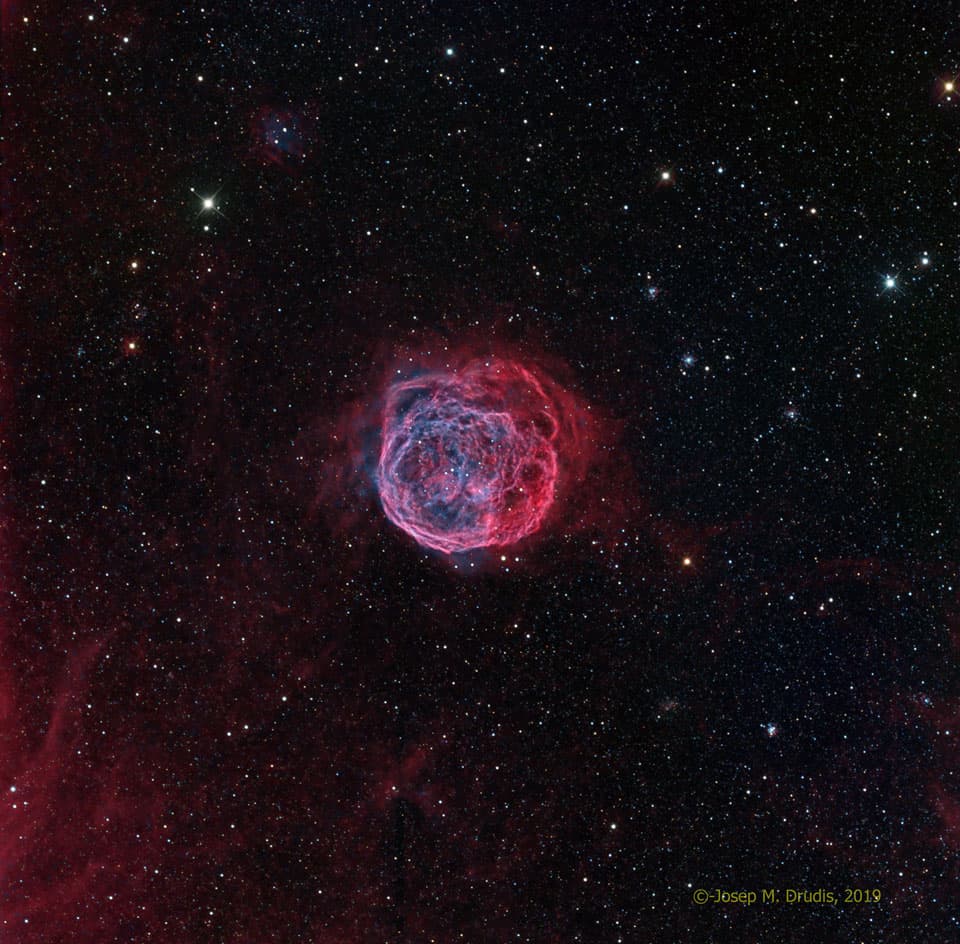Blog
Hair musical performance #6 early matinee 1pm
Mixed Blood Theater-Minneapolis
Music by Stephen Houtz, JD Lee and mick laBriola
more...“I tire so of hearing people say,
Let things take their course.
Tomorrow is another day.
I do not need my freedom when I’m dead.
I cannot live on tomorrow’s bread.
Freedom
Is a strong seed
Planted
In a great need.
I live here, too.
I want freedom
Just as you.”
Langston Hughes
more...NGC 3227 is an intermediate spiral galaxy that is interacting with the dwarf elliptical galaxy NGC 3226. The two galaxies are one of several examples of a spiral with a dwarf elliptical companion that are listed in the Atlas of Peculiar Galaxies. Both galaxies may be found in the constellation Leo.
| Distance | 77 ± 9 Mly (24 ± 3 Mpc) |
|---|
Sir William Herschel already recognised them as a ‘double nebula’[citation needed] and they were jointly listed as Holm 187 in the Catalogue of Double and Multiple Galaxies and as Arp 94 in the Atlas of Peculiar Galaxies. Amateur telescopes can discern them but require magnification of about 100 times. They are situated 50′ east of the well-known double star system Gamma Leonis (i.e. Algieba).
NGC 3227 contains a Seyfert nucleus, a type of active galactic nucleus (AGN). Such Seyfert nuclei typically contain supermassive black holes. This object has an estimated mass of 1.4+1.0
−0.6×107 M☉.
As is typical of many AGN, the nucleus of NGC 3227 has been identified as a source of variable X-ray emission.This variability occurs on time scales ranging from a few hours to a few months. The variability may be caused by variations in the density or ionization of gas and dust near the AGN that absorb the X-ray emission. A substantial amount of the X-ray-absorbing gas may lie within 0.4 parsec (1.3 light-years) of the nucleus. An observed change in the shape of the X-ray spectrum in 2000 and 2001 suggests that some of the X-ray absorbing gas is located within 10–100 light-days of the nucleus.
The luminosity of the nucleus reached a maximum in 1977 when evidence suggesting long-lived one-sided or two-sided gas streams was obtained. X-ray radiation of the central accretion disc is reprocessed in one to two days to be re-emitted in the optical spectrum. Infra-red light emission from the hot dust torus lags optical light emission from the nucleus by about 20 days in NGC 3227. The temperature of the dust torus is estimated at 1500 K to 1800 K in NGC 3227 and similar galaxies.
more...Natalie Maria Cole (February 6, 1950 – December 31, 2015) was an American singer, voice actress, songwriter, and actress. Cole is daughter of the acclaimed and pioneering American singer and jazz pianist Nat King Cole. She rose to musical success in the mid-1970s as an R&B artist with the hits “This Will Be“, “Inseparable” (1975), and “Our Love” (1977). Cole re-emerged as a pop artist with the 1987 album Everlasting and her cover of Bruce Springsteen‘s “Pink Cadillac“. In the 1990s, she re-recorded standards by her father, resulting in her biggest success, Unforgettable… with Love, which sold over seven million copies and also won Cole seven Grammy Awards. She sold over 30 million records worldwide. On December 31, 2015, Cole died at the age of 65 at Cedars-Sinai Medical Center in Los Angeles, California, due to congestive heart failure.
Natalie Cole was born at Cedars of Lebanon Hospital in Los Angeles, to American singer and jazz pianist Nat King Cole and former Duke Ellington Orchestra singer Maria Hawkins Ellington, and raised in the affluent Hancock Park district of Los Angeles.
more...John Pisano (born February 6, 1931) is a jazz guitarist born in Staten Island, New York.
Pisano has accompanied in concert or recording Burt Bacharach, Tony Bennett, Herb Alpert, Natalie Cole, Michael Franks, Diana Krall, Peggy Lee, Julie London, Joe Pass, Frank Sinatra, Barbra Streisand, Billy Bean, and Chico Hamilton.
Thomas S. McIntosh (December 6, 1927 – July 26, 2017) was an American jazz trombonist, composer, arranger, and conductor.
McIntosh was born in Baltimore, Maryland and studied at Peabody Conservatory. He was stationed in West Germany after World War Two. He played trombone in an Army band, and eventually graduated from Juilliard in 1958. He played in New York City from 1956, with Lee Morgan, Roland Kirk, James Moody (1959, 1962) and Art Farmer and Benny Golson (1960).
McIntosh was baptized a Jehovah’s Witness on August 13, 1960.
In 1961, McIntosh composed a song for trumpet legend Howard McGhee. In 1963, he composed music for Dizzy Gillespie‘s Something Old, Something New album. The following year his composition Whose Child Are You? was performed by the New York Jazz Sextet, of which he was a member. He also worked with Thad Jones and Mel Lewis later in the 1960s.
In 1969, McIntosh gave up jazz and moved to Los Angeles to pursue a career in film and television composing. He wrote music for The Learning Tree, Soul Soldier, Shaft’s Big Score, Slither, A Hero Ain’t Nothin’ but a Sandwich, and John Handy.
In 2008, McIntosh was named a Jazz Master by the National Endowment for the Art
McIntosh died in his sleep on July 26, 2017.
more...
Dark nebulae like Barnard 344 look much more interesting when silhouetted against such colorful clouds, the effect of the filters this imager used and the colors he assigned to them. B344 resides in the constellation Cygnus the Swan near the star Sadr (Gamma Cygni). (5.2-inch Thomas M. Back TMB-130 refractor, Apogee U8300 CCD camera, Hydrogen-alpha/Oxygen-III/Sulfur-II image, two-panel mosaic with each having exposures of 9.5, 6.5, and 6.5 hours, respectively).
more...Al Kooper (born Alan Peter Kuperschmidt, February 5, 1944) is an American songwriter, record producer and musician, known for organizing Blood, Sweat & Tears (although he did not stay with the group long enough to share its popularity), providing studio support for Bob Dylan when he went electric in 1965, and bringing together guitarists Mike Bloomfield and Stephen Stills to record the Super Session album. In the 1970’s he was a successful manager and producer, notably recording Lynyrd Skynyrd‘s first three albums. He’s also had a successful solo career, written music for film soundtracks, and has lectured in musical composition. He continues to perform live.
Kooper, born in Brooklyn, grew up in a Jewish family in Hollis Hills, Queens, New York. His first professional work was as a 14-year-old guitarist in the Royal Teens, best known for their 1958 ABC Records novelty 12-bar blues riff, “Short Shorts” (although Kooper did not play on the recording[4]). In 1960, he teamed up with songwriters Bob Brass and Irwin Levine to write and record demos for Sea-Lark Music Publishing. The trio’s biggest hits were “This Diamond Ring“, recorded by Gary Lewis and the Playboys, and “I Must Be Seeing Things“, recorded by Gene Pitney (both 1965). When he was 21, Kooper moved to Greenwich Village.
He performed with Bob Dylan in concert in 1965, including playing Hammond organ with Dylan at the Newport Folk Festival, and in the recording studio in 1965 and 1966. Kooper also played the Hammond organ riffs on Dylan’s “Like a Rolling Stone“. It was in those recording sessions that Kooper met and befriended Mike Bloomfield, whose guitar playing he admired. He worked extensively with Bloomfield for several years. Kooper played organ once again with Dylan during his 1981 world tour.
more...Vincent Peter Colaiuta (born February 5, 1956) is an American drummer who has worked as a session musician in many genres. He was inducted into the Modern Drummer Hall of Fame in 1996, and the Classic Drummer Hall of Fame in 2014.Of Italian descent, Colaiuta was given his first drum kit when he was seven. He took to it naturally, with little instruction. When he was fourteen, the school band teacher gave him a book that taught him some of the basics. Buddy Rich was his favorite drummer until he heard the album Ego by Tony Williams, an event that changed his life. Colaiuta was also listening to organ groups, notably Jack McDuff, Jimmy McGriff and Don Patterson.
After leaving school, he played local gigs in Boston. He joined a brief tour organized by Al Kooper, then worked in California on an album by Christopher Morris, which Kooper was producing. Although he returned to Boston, he was drawn back to California by friends and his experience recording. He took the bus from Boston to Los Angeles during the blizzard of 1978. After performing in jazz clubs, he won the audition to play drums for Frank Zappa. He toured with Zappa and appeared on the albums Joe’s Garage, Tinsel Town Rebellion, and Shut Up ‘n Play Yer Guitar.
https://www.youtube.com/watch?v=0DfdmhKAQ3c
more...Big Bill Bissonnette (February 5, 1937 – June 26, 2018) was an American jazz trombonist, drummer, and record producer.
He was a strong advocate of New Orleans jazz as played by veteran African-American musicians. In the 1960s, he led his own group, the Easy Riders Jazz Band, formed his own label, Jazz Crusade, and organized northern tours for Kid Thomas Valentine, George Lewis, and Jim Robinson. He produced over 100 recorded jazz sessions for Jazz Crusade and appeared as trombonist or drummer on over 50 recording sessions of New Orleans jazz.
The Easy Riders Jazz Band was one of the most acclaimed revival bands of the 1960s. Bissonnette brought Sammy Rimington to the United States. During his career, he worked with Alvin Alcorn, Red Allen, Jimmy Archey, Polo Barnes, Albert Burbank, Alex Bigard, Don Ewell, Pops Foster, George Guesnon, Edmond Hall, Bob Helm, Tuba Fats Lacen, George Lewis, Fred Lonzo, Alcide Pavageau, George Probert, Kid Sheik, Zutty Singleton, Victoria Spivey, Gregg Stafford, Michael White, and Kid Thomas Valentine.
more...the Tuareg sounds and Algerian/Malian blues
more...https://www.youtube.com/watch?v=1gSCIq8N7dU&t=0s&list=PLEB3LPVcGcWZ0hsQ5_jgSMhawAnDzy1io&index=5
more...Massive stars profoundly affect their galactic environments. Churning and mixing interstellar clouds of gas and dust, stars — most notably those upwards of tens of times the mass of our Sun — leave their mark on the compositions and locations of future generations of stars. Dramatic evidence of this is illustrated in our neighboring galaxy, the Large Magellanic Cloud (LMC), by the featured nebula, Henize 70 (also known as N70 and DEM301). Henize 70 is actually a luminous superbubble of interstellar gas about 300 light-years in diameter, blown by winds from hot, massive stars and supernova explosions, with its interior filled with tenuous hot and expanding gas. Because superbubbles can expand through an entire galaxy, they offer humanity a chance to explore the connection between the lifecycles of stars and the evolution of galaxies.
more...More Posts
- World Music with Vicente Amigo
- Daily Roots with Earth & Stone
- The Cosmic with ARP 336
- Phil Upchurch Day
- Buster Bailey Day
- World Music with Che Sudaka
- Daily Roots with Israel Vibration
- The Cosmos with W3
- Screaming Jay Hawkins Day
- Tatá Güines Day
- World Music with Ambi Subramaniam
- Daily Roots with Slim Smith
- The Cosmos with NGC 3169 & SN2003cg
- Chico Freeman Day
- Ben Riley Day
- Joe Morello Day
- World Music with Dobet Gnahoré
- Daily Roots with Linval Thompson
- The Cosmos with VV 166
- Desmond Dekker Day
